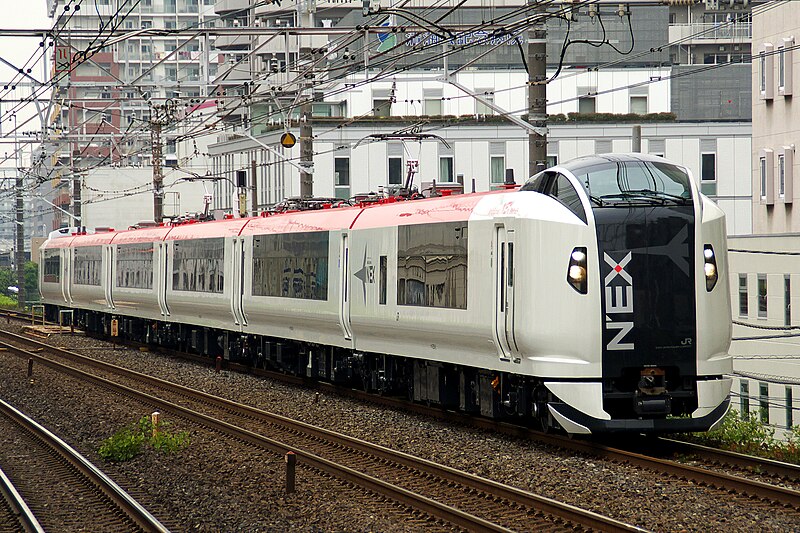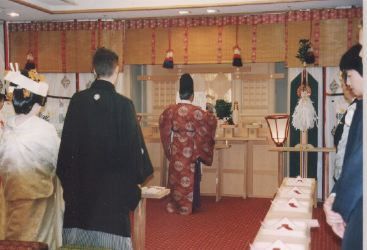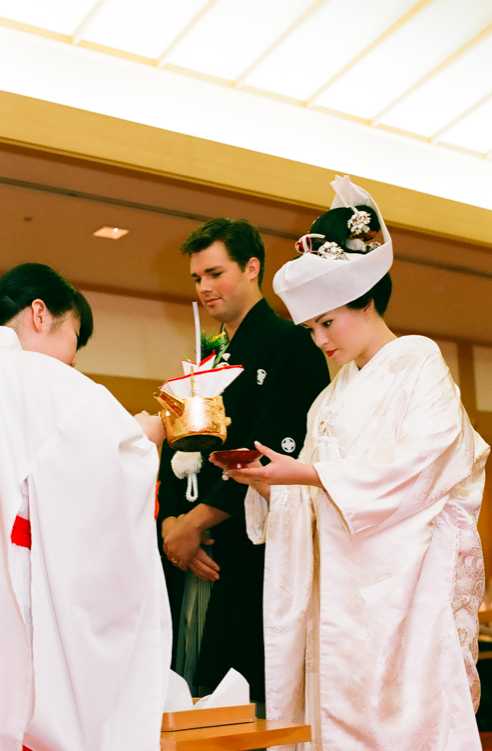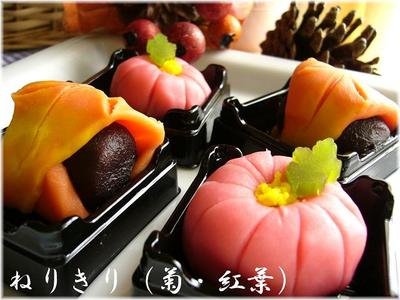空港第2ビル駅 (Airport Terminal 2 Station)
Chiba Prefecture, Japan
Kaoko: Here we go, Japan! We're coming back again to Tokyo!
Nga: So it is Japan? Naruhodo ne (I see)... it's no wonder if you two always get excited every time you travelling to this country... thanks for asking me to join, Kaoko-chan and Tna-chan... eh, where's Tna-chan?
Kaoko: So iueba (come to think of it)... I haven't seen that girl since we arrived here. Doko ni itte n deshou ano onna (where is she going)... Ah, there she is!
Tna:

Kaoko: Doko itteta no? Ara... dou ka shita? (Where have you been? Hey, something wrong?)
Tna: Otearai kara dattta (I'm from toilet)... I'm jet lag. Two weeks ago we just got to Nagano, then we went home, and now come back again. Tsukareta (How tired)...
Nga: Shou ga nai ne (that can't be helped), Tna-chan... but you're lucky could come here so often. I envy you...
Tna: Sou ne... Maa ikka. Tonikaku, have you bought the ticket, Kaoko-chan?
Kaoko: Mada desu (I haven't). Ah, c'mon, let's join the queue!
Nga: Ano chotto... where will we go? Isn't someone will pick us up here?
Tna: Muri da, Nga-chan... Kagoro-occhan is busy, I called him before we took off. So we have to get there by ourselves...
Nga: Just... the three of us? In this foreign country?
Kaoko: Daijoubu (That's OK), Nga-chan. We've ever visited Tokyo (take a look at Tour de Tokyo) once. Yeah even the worst scenario is we possibly get lost anytime...

Nga: Mattaku... so, let me know first about our journey!
Tna: Well, well... so first of all, we have to buy a ticket to get to Shinjuku-ward in Tokyo, we'll get there by Narita Express. Nah, we will meet someone there who is in charged of today's lesson...
Nga: Ja, nani ga matteru? Ikimashou~! (So, what we're waiting for? Let's go!)
Kaoko: Why suddenly you're getting excited, Nga-chan?
Nga: Betsuni (nothing...)

Narita Express
Narita Aiport Terminal 2 - Takao Station (Tokyo) Route
Nga: What a luxurious train!
Kaoko: You're right... it's really comfortable!
Tna: Sasuga Nippon kara... (As expected from Japan...). But it's kinda cost quite a lot for such a short distance journey... ¥1,450 until Shibuya-eki...
Kaoko: Shikatanai yo. Soreyori, why don't we just enjoy the beautiful scenery from the window?
SHINJUKU STATION
Shinjuku Ward, Tokyo Prefecture
Japan
Kaoko: Ah chotto (wait), Tna-chan!
Tna: Nani ga? (What's up?)
Kaoko: Isn't Meiji Jingu (Shrine) in Shibuya? Why we're stopped in Shinjuku Station instead?
Tna: As you have known that Shibuya is adjacent to Shinjuku, and based on the map I bought, Meiji Shrine is closer from Shinjuku Station instead of Shibuya Station...
Kaoko: Ah, sou desu ka (so it was like that).. we didn't go by train before, so I have no idea...
Nga: Hey, we're gonna visit the shrine? What for?
Tna & Kaoko: Sore wa... himitsu da yo~ (That's a secret~!)
Nga: Taku...

MEIJI JINGUU (SHRINE)
Shibuya Ward, Tokyo Prefecture
Japan
Tna: Month ago precisely. Kedo (but), we didn't enter the shrine, jikan ga nakatta kara (because we didn't have much time)...
Nga: Then, whom will we meet?
Kaoko: Ah, kanojo wa doko ni iru kashira (I wonder where is she)...?
Tna: Maybe she has a press conference now... why don't we go inside?
Yoko: Tna-san, Kaoko-san!
Tna & Kaoko: Yoko-san? Omatase (sorry for making you waiting)...
Yoko: Ii n desu (It's okay with me)... ara? Mouri-san didn't accompany you?
Tna: Yeah, he said he was busy...
Yoko: Wow, it's cool that you could go here without getting lost!
Kaoko: Haha, we should thank to that occhan. He accompanied us the last time we came a visit here...
Yoko: Sou desu ka...
Tna: By the way, this is Nga, a friend of ours. She's also a Japanese Classroom member...
Yoko: Konnichiwa, Nga-san~
Nga: Konnichiwa, Yoko-san... I'm so surprised that our today's guest is a well-known actress...
Tna: Loh, we didn't tell you before, Nga-chan?
Nga: Who said that it was a secret before?!

Kaoko: Ahaha~ sumimasen (I'm sorry)...
Nga: Then, what we're going to learn today?
Yoko: Kekkon no koto wa (About marriage)...
Nga: Marriage?
Yoko: Yes, Japanese Traditional Marriage for exact. That's why we're currently in Meiji Jingu...
Nga: Why Meiji Shrine?
Yoko: It's not exclusively at Meiji shrine, we can hold the traditional marriage in another Shinto Shrine, such as Asakusa Shrine in Taitou Ward, Ookunitama Shrine in Fuchu Ward, Takanawa Shrine in Minato Ward, and some others. Nah, but the most popular place for marriage is here...
Tna: Ja, Nihon no kekkon no koto, oshiete kudasai yo (So, tell us about Japanese marriage)...
Yoko: Hai, hai (Yeah, yeah). Most of Japanese weddings are taken place in spring and fall. Modern marriages usually held in hotel or such while the traditional ones in Shinto shrine. Brides wear traditional kimono called shiromuku (white kimono robe) and grooms wear montsuki (black formal kimono) and hakama (kimono pants)... Nah, coincidentally, there is a marriage held right now~ asoko ni mite kudasai (look over there)!
Yoko: The bride wears a white kimono and an elaborate headpiece covered with many ornaments to invite good luck to the happy couple. A white hood is attached to the kimono, which the bride wears like a veil to hide her 'horns of jealousy' from the groom's mother, who will now become the head of the family. However, Japanese brides traditionally change their outfits several times during the day, although for the ceremony a red and white kimono is worn for good luck. Cherry blossoms, jasmine and lotus blossoms can be incorporated into the bride's flowers to give it that authentic Japanese touch...
Kaoko: How about the ceremony?
Yoko: In the ceremony, the couple is purified, drinks sake, and the groom reads the words of commitments...
Yoko: The sake drinking ritual is called San san kudo. This is a three-times-three exchange of nuptial cups performed by the bride and groom. Drinks of "Sake" are then exchanged between members and close relatives of the both families to signify their union through the wedding. The groom, then the bride takes three sips of sake from three different sake cups. They then offer the sake to the families: first the groom's father, then his mother, the bride's father, then her mother...
San San Kudo
Yoko: Cups of sake are served by 'Miko' girls in red and white dresses to the families and friends. Traditional music is played and in recent times, this is the time when rings are exchanged. The music at the reception can vary. Traditionally, stringed instruments called Shamisen (three stringed Japanese musical instrument) and Japanese drums will provide the music for the reception...
Miko Girls
Shamisen
Japanese Man Playing Shamisen
Japanese Drums
Nga: Then...?
Yoko: The next step is when the bride and groom progress to the sanctuary to offer twigs of "Sakaki" sacred tree in worship to gods to end the main part of the wedding ceremony. It is a short service, simple in procedure but full of solemn atmosphere...
Sakaki Twigs, considered sacred in Shinto
Tna: Is the ceremony ended here?
Yoko: Yeah. Soon after the ceremony ended, reception parties called 'kekkon hiroen' are held. The style and scale of receptions vary depending on the regions. Typically, relatives, co-workers, and neighbors are invited to wedding receptions. People usually dress formally to attend a wedding. Female guests wear dresses, suits, or kimono while male guests wear black formal suits...
Yoko: While enjoying the meals, the guests can also engage in some performances like singing or giving speeches. Japanese cakes, called wagashi, are served into lucky figures; the crane, tortoise and plum blossom...
Nga: Wah, looks delicious. But unfortunately it's not for the guests...
Yoko: Oh, I forgot to tell you. As for Japanese people, wedding guests are highly respected. Consequently, it is not uncommon for the bride and groom to spend $50 or more per guest on hikidemono or parting gift. They are often tablewares, sweets, interiors, and so on. Less pricey are the kohaku manjyu, round steamed buns with bean paste filling, which are often presented in pairs to guests, one red bun and one white bun...
Kohaku Manju
Yoko: Nah, if you receive an invitation card to a wedding reception, you need to return the enclosed card and let them know if you can attend or not as soon as possible. If you are attending a Japanese wedding reception, you are expected to bring cash for a gift (oshugi). The amount depends on your relationship with the couple and the region, unless fixed amount is indicated in the invitation card. The oshugi is presented in a decorative envelope called Shugi-bukuro...
Shugi Bukuro
Yoko: Just like in another country's culture, when you go to the party, hand the envelope to the person at the reception desk and sign your name in the guestbook. That's all about Japanese traditional marriage...
Tna: Actually it's not as complicated as I imagined...
Yoko: Yeah, right. The modern one is even simpler... oh, kochi, if you want to know how the wedding happens...
Kaoko: Great! Hontou ni arigatou (Thank you so much), Yoko-san, for your assistance...
Yoko: Kochira koso arigatou (you're welcome)... then, where will you guys go after this?
Tna: Maybe... coming back to our hometown, you know that we're from the different countries...
Nga: Maji ka yo (seriously), Tna-chan? We're gonna leave Japan this fast? Taku... we're not even exploring Tokyo yet...
Kaoko: You haven't, Nga-chan? But we have, once! Ne, Tna-chan? 

Nga: Urusse (how annoying)... 

Tna: Haha~  . Maa ii, Kaoko-chan... we still have time. How about visiting Hakone in Kanagawa Prefecture? There is a beautiful onsen overthere!
. Maa ii, Kaoko-chan... we still have time. How about visiting Hakone in Kanagawa Prefecture? There is a beautiful onsen overthere!
 . Maa ii, Kaoko-chan... we still have time. How about visiting Hakone in Kanagawa Prefecture? There is a beautiful onsen overthere!
. Maa ii, Kaoko-chan... we still have time. How about visiting Hakone in Kanagawa Prefecture? There is a beautiful onsen overthere! Yoko: Woah, good idea! The scenery in Hakone is also incredibly awesome! You can even watch Fuji-san (Mount Fuji)...
Nga: Sugee~! Ikou, ikou! (Incredible! Let's go)
Tna: But... I don't know how to go there...
Yoko: Shinpai shinai (don't worry)~! You can get there through Hakone Free Pass by Odaku Railways, about 70 minutes from Shinjuku...
Kaoko: Ah, not so far. Let's go then, Tna-chan, Nga-chan~! Sayonara, Yoko-san!
Tna, Nga: Arigato, Yoko-san! Sayonara~!
Yoko: Sayonara~! Ki o tsukeru yo (take care)...
Tna, Kaoko, Nga: Haaaai~~ (Yeah~~)




















No comments:
Post a Comment